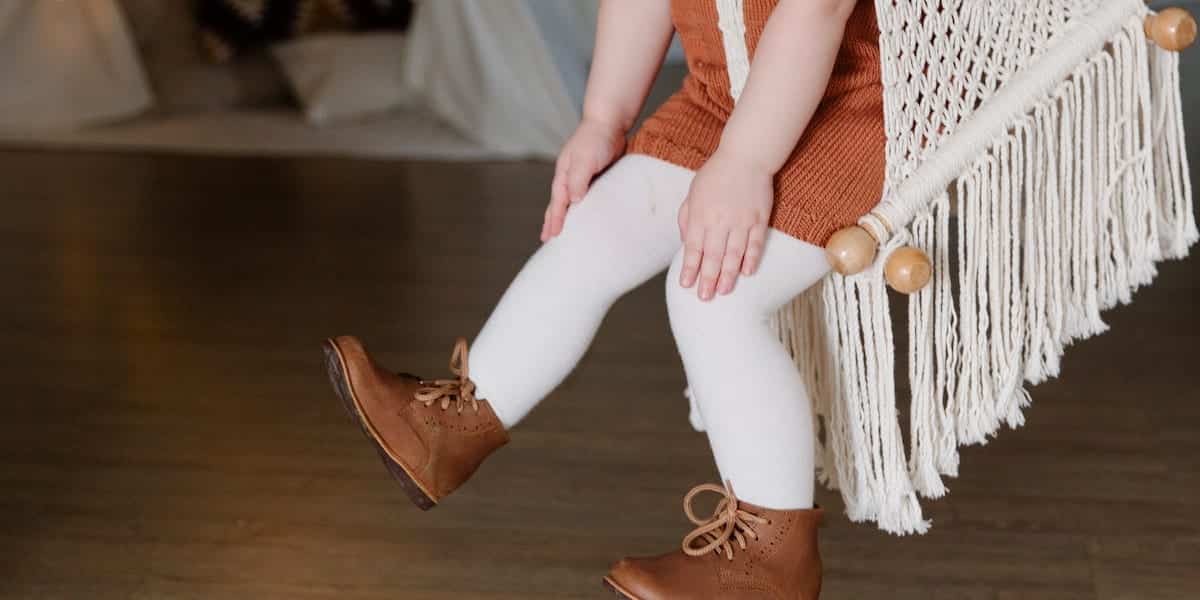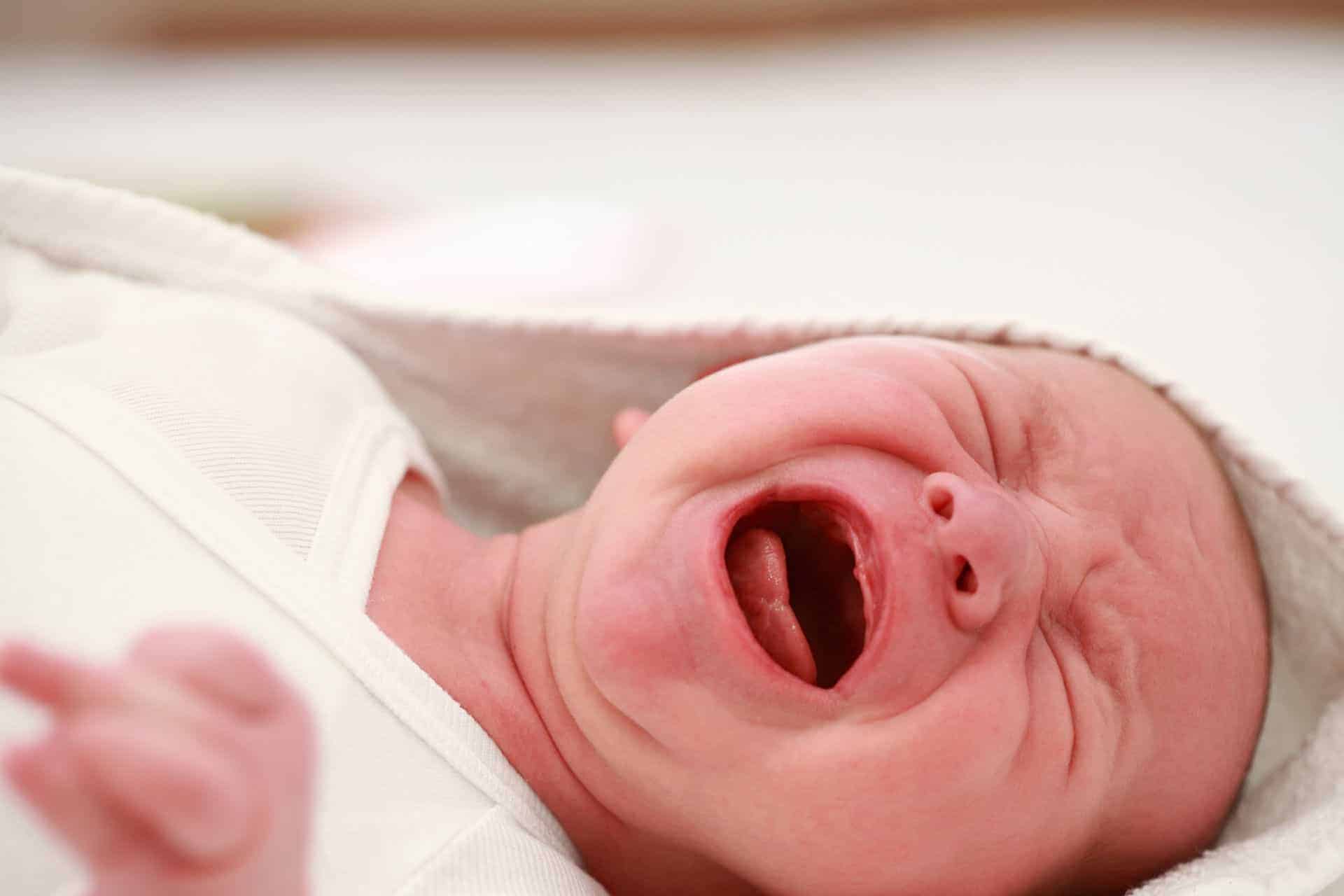So, you’ve come home with your newborn baby and in the first three weeks or so you’ve noticed that there is dry, flaking skin on their head. Should you worry? Absolutely not.
This sounds like a simple case of cradle cap, a common skin condition that affects the majority of newborns. It is easily remedied and not a danger to them.
However, sometimes cradle cap starts to smell and although it isn’t a great cause for concern, you might be wondering why it suddenly smells; this is what we are here to help you with.
As an Amazon Associate I earn from qualifying purchases. The links below may be affiliate links. Please read my disclosure policy for more information.
What is Cradle Cap?
Seborrheic dermatitis, or cradle cap, as it is more commonly known, is a type of skin rash that affects around 70% of babies, usually occurring when they are three weeks old.
It usually appears as a yellow or brown rash with one of three textures: scaly, flaky, or greasy.
Although cradle cap is usually located on an infant’s head, it can also be found on the forehead, around the eyebrows. Behind the ears, on the chest, and sometimes between babies’ skin folds.
You might see cradle cap and worry that it is a skin irritant to your baby, but rest assured that there is little cause for concern. Cradle cap is very rarely an irritant to babies, most of whom carry on as if nothing is wrong.
There are some severe cases in which cradle cap can cause hair loss, but once the cradle cap has been treated, this usually grows back quickly, leaving your baby happy, healthy, and beautiful once more.
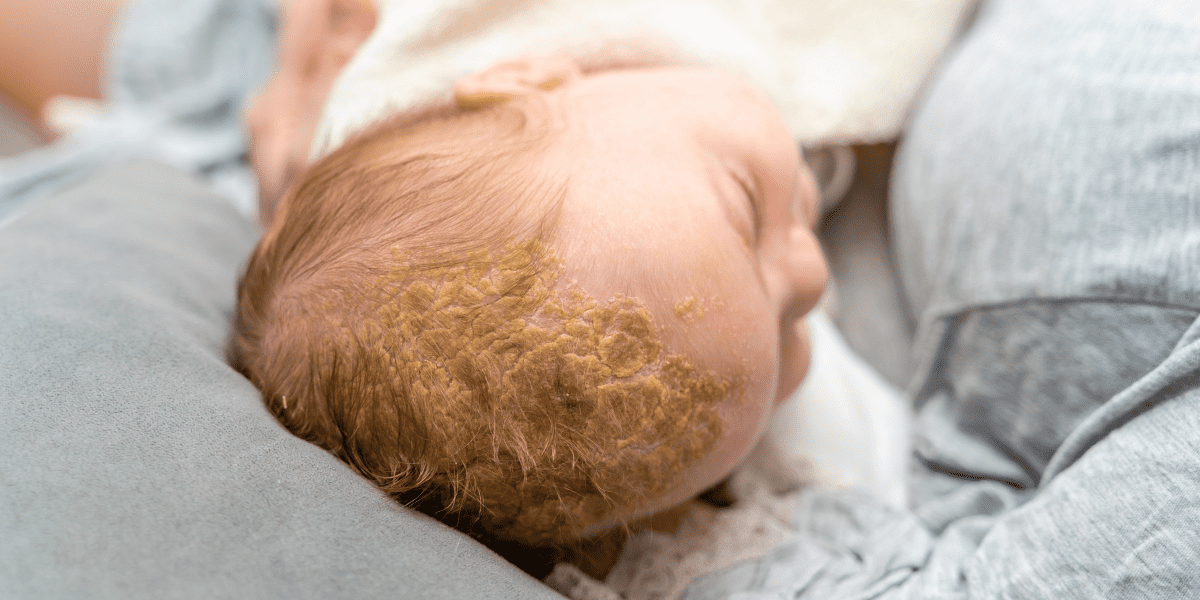
Is it an Allergic Reaction or Cradle Cap?
When you first notice that your baby’s skin has become flaky, you might wonder whether it is cradle cap or skin allergies that they’re suffering from.
To check if it is an allergy, all you have to do is watch your baby for a little while, looking for any signs that they are itchy or uncomfortable.
If your baby is irritable, unusually fussy, or constantly trying to rub their head on nearby surfaces, this is a sign of an allergic reaction, and it will need treating by a doctor.
What Causes Cradle Cap?
The exact cause for cradle cap is unknown, but there are a few theories about it. One study suggests that the mother’s hormones may play a role in this when they are transferred to the baby.
Prior to birth, women can pass their hormones to the baby via the placenta, then after birth, hormones can be transmitted via breastfeeding.
However, another theory dismisses the hormones and instead suggests that most babies could have overactive sebaceous glands, which cause skin cells and wax to build up at a higher rate for a short while after birth.
Ultimately, we still don’t know the cause, though there are many studies that aim to find it.
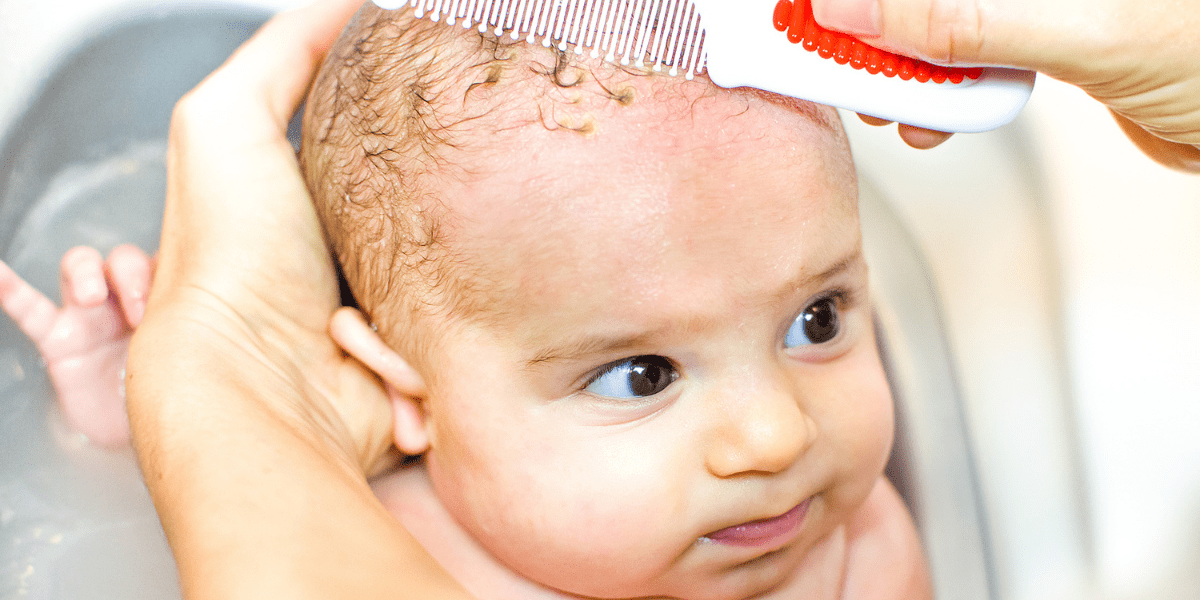
Is Cradle Cap Contagious?
Since cradle cap occurs in around 70% of infants, it is easy to assume that it is contagious and that all the children got it from the same playgroup, however, this isn’t the case.
Cradle cap isn’t contagious at all.
How Long Does Cradle Cap Last?
The majority of cradle cap cases don’t remain past a baby’s first birthday, though there are a few exceptions to the rule, in which case it may last just a little while longer.
Although cradle cap isn’t a long-lasting ailment, it will remain longer if it transitions into a yeast infection, during which time, it will need medical treatment; doctors will usually prescribe a fungal cream to treat the infections caused by cradle cap.
Most cases of cradle cap will end on their own, but if you are desperate to get rid of it, then you can help it along by regularly shampooing your baby’s head, and then brushing the scalp with a soft-bristled brush to break down any excess oils and skin flakes.
It is important to remember however that you shouldn’t pick or scratch at your baby’s cradle cap, as this will only exacerbate the case, irritating the scalp further and causing your baby mild pain.
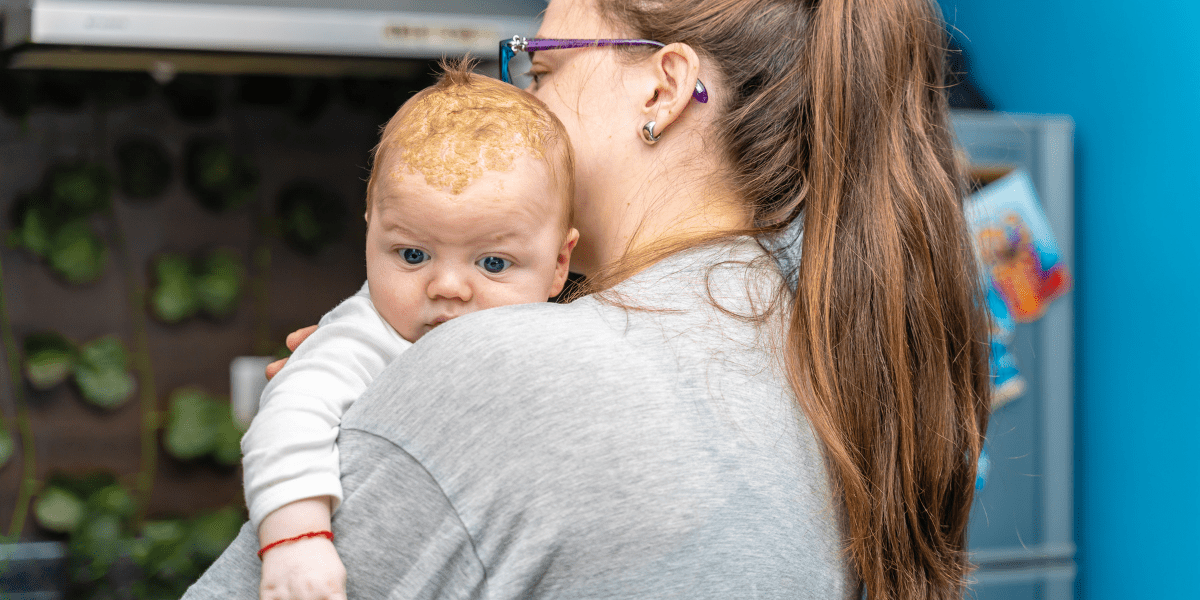
How to Get Rid of Cradle Cap?
Unless it is an extreme case that has turned into an infection, cradle cap doesn’t need any fancy medical treatment or prescriptions.
In fact, there are plenty of effective home remedies which parents have been using for years, and still swear by to this day.
Baby Shampoo
By using gentle baby shampoo and then following up with a soft scalp brush, mild cases of cradle cap can be treated quickly and efficiently; you can even purchase brushes that have been specifically designed to treat cradle caps.
When using shampoo to treat your baby, make sure to opt for the non-scented shampoo, which is generally easier on their delicate skin. You should also avoid using adult shampoo which isn’t good for a baby’s skin.
- Formula that’s really gentle, really works, then rinses clean. Easy-peasy pump for instant foamy fun.
- Made without parabens, sulfates, phthalates, dyes, synthetic fragrance.
- Made with thoughtfully chosen ingredients and little ones in mind
Cradle Cap Shampoo
Sometimes, the regular baby shampoo just isn’t strong enough.
In that case, there are multiple shampoos designed to treat cradle caps, the majority of which have anti-fungal agents, to prevent a yeast infection from forming.
- Mustela Cradle Cap Bundle is designed to gently help eliminate and prevent cradle cap flakes.
- Set includes our Foam Shampoo for Newborns and Cradle Cap Cream, formulated with 99 and 95 percent natural ingredients.
- Easy to apply, both the foam shampoo and the cradle cap cream are hypoallergenic and safe to use from birth on.
Coconut Oil
Although this may sound more like a cooking ingredient than a cradle cap treatment, this oil has been known to work in some cases. The oil can act as a moisturizer for your baby’s scalp, softening any skin flakes that your baby has.
Once the skin flakes are nice and soft, they become easier to brush off. The oil is also great at reducing skin inflammation, soothing even the worst cases of cradle cap that may have become something of an irritant to your child.
If you do opt for using oil, it is important for you to wash it away once you are done so you don’t cause further problems by clogging up your baby’s natural oil glands.
Although olive oil used to be recommended as well, it has recently been removed from most home treatment lists, since it is less effective than previously thought.
- ALL NATURAL, ALL GOOD: Parachute Naturalz 100% Virgin Organic Coconut oil, USDA certified, is extracted from the finest natural coconuts harvested manually using the cold-pressed technique to conserve the natural potency, flavor, and aroma of real coconuts. This pure coconut oil is packed in a glass jar to ensure zero chemical interaction, and to keep purity, aroma, and stability of oil pristine.
- ONE COOKING OIL MANY USES: Keto, vegan, vegetarian, gluten-free, paleo, etc. whatever diet plan you follow, this unrefined coconut oil fits effortlessly in it. Use it for baking, salad dressing, or deep frying, this oil acts as a great substitute for butter and unhealthy oils.
- RADIANT SKIN AND HEALTHY HAIR: This coconut oil for hair and skin acts as a great moisturizer and conditioner. Parachute Naturalz Organic Virgin Coconut oil can independently provide many benefits to skin and hair. With its antioxidant properties, this organic coconut oil for skin encourages the skin rejuvenation to make it look naturally glowing and nourished and prevents hair from further damage, making it look frizz free, moisturised, silky and voluminous.
What to Avoid When Treating Cradle Cap
When treating your baby for any kind of skin-related affliction, it is important to remember that their skin is much more sensitive than ours.
Because of this, you cannot use any harsh chemicals that may damage their skin or become an unbearable irritant.
Although some websites may suggest using vinegar, essential oils, or hydrogen peroxide to treat cradle caps, you shouldn’t do so as they are more likely to cause skin irritation and sometimes allergic reactions.
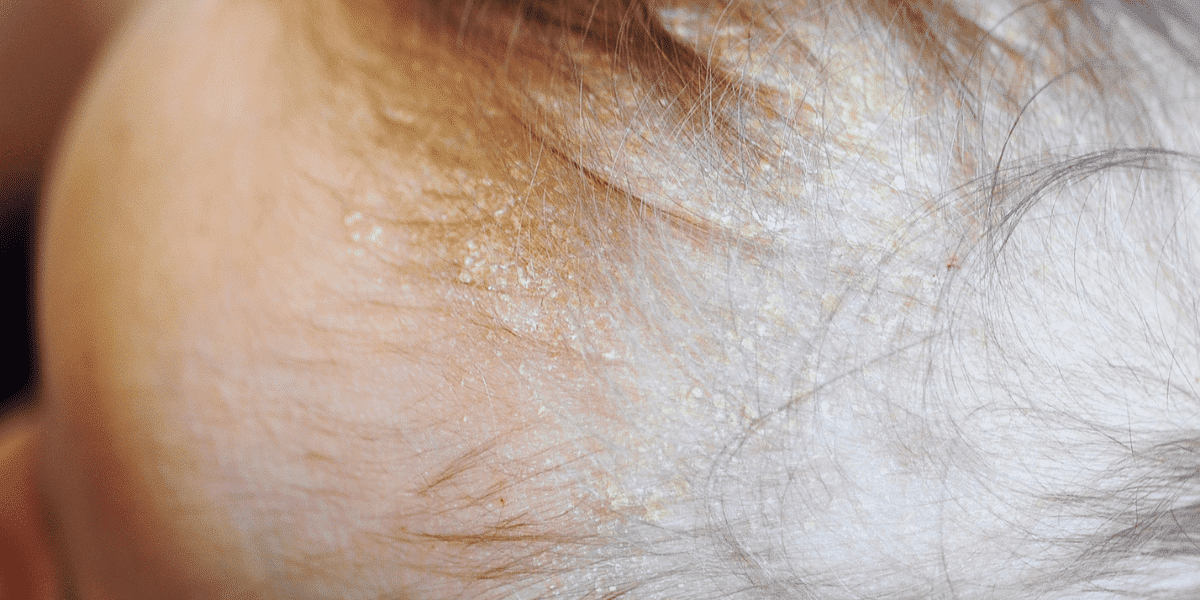
What is the Difference Between Cradle Cap & Eczema?
Unless it has become a severe case, cradle cap doesn’t act as an irritant to your baby. Eczema, however, causes the skin to swell, becoming itchy and uncomfortable.
If your baby has become fussy, irritable, or keeps trying to rub its head against nearby surfaces, this may be a sign of eczema and should be treated by a doctor.
What Does Cradle Cap Look Like?
Cradle Cap’s appearance may vary somewhat from case to case, but some of the signs are:
- A yellow or brown layer atop your baby’s scalp.
- Skin that looks oily, waxy, or scaly.
- Ares of crusty skin.
- Mild skin swelling.
It is also important to remember what cradle cap doesn’t do, as these can be signs of infection.
The cradle cap does not:
- Feel warm or hot.
- Itch.
- Leak or weep fluids.
- Cradle cap is never black.

Why Does Cradle Cap Sometimes Smell?
When cradle cap starts to smell, it is usually because of an extra oily build-up. This will be a mild scent like wax and isn’t really a problem.
However, sometimes, you will find that the cradle cap has a stronger scent, similar to stale bread. This occurs when the cradle cap has become a more severe case and is transitioning into a yeast infection.
If it gets to this stage, it will need professional treatment that the home remedies won’t give. This is when it’s time to take your baby to the doctor, who will usually prescribe a cream for fungal infections.
Ultimately, cradle cap is nothing to worry about. It isn’t fatal, nor is it a skin irritant.
For the most part, it is just somewhat unsightly, and if you want it gone as soon as possible, then there are plenty of home remedies to try.
As long as you don’t pick at it, and avoid the harsh chemicals, your baby will recover quickly and look healthier than ever.
If you are using home remedies and the cradle cap doesn’t look any better, then you should take your baby to the doctor for a more effective treatment.
You should also do this if the rash is hot to the touch, weeping fluid, or bleeding as it is usually a sign of infection, not cradle cap.




